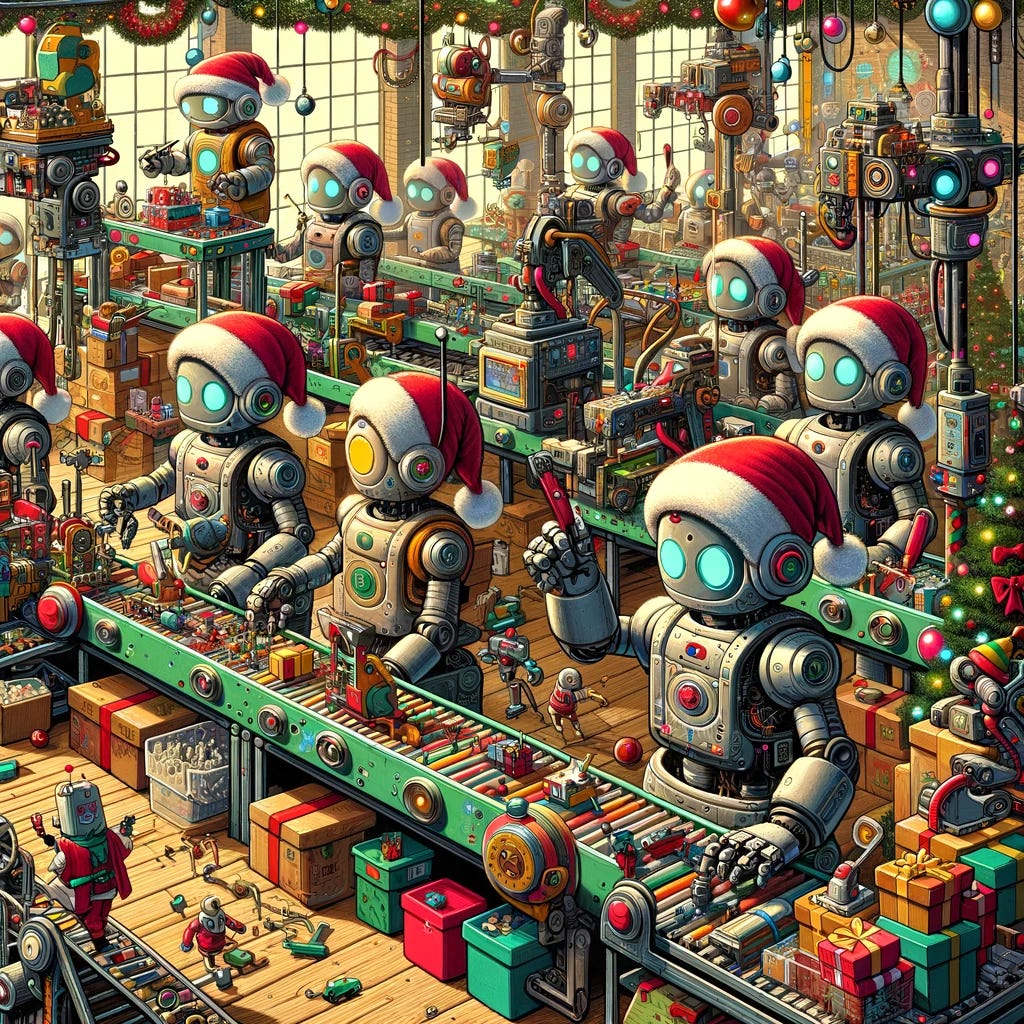Nobody ever considers themselves a Luddite. Until it’s your job.
Smarter people than me have written a lot about the jobs facing AI disruption. It’s clear that people will be replaced in fields like law, medicine, illustration, game studios, and programming (please no…!).
But nobody is talking about AI taking jobs that don’t exist.
I’m talking about the almost jobs which were never quite viable.
Transcription is a great example. Yes, technically some people did transcription. But only 0.0001% of video was ever transcribed. The economics and inconvenience never made sense. The machines have rolled in and started transcribing your meetings. They took millions of jobs which didn’t really exist.
The most obvious use-cases of AI are disrupting well-defined human jobs. But this is where everyone is building. Including the incumbents. And the incumbents will likely win.
E.g. image/video generation is the most visual symbol of generative AI. But it’s very hard to compete with Photoshop’s Generative Fill. So market-share doesn’t change.
The same is true of most categories of obvious gen-AI disruption.
Clearly this table isn’t the big “disruption” we’ve all been looking for.
A lot of VCs talk about outsize returns requiring contrarian thinking.
Perhaps the best candidates for disruption are actually “non-job jobs”. Things like transcription which were never quite worth it as a mainstream human job. Therefore the opportunity or future state is less obvious and there’s fewer companies deploying this as a natural evolution of their current tools.
These jobs which were almost viable for humans represent a less obvious, overlooked opportunity for new AI.
Let me throw some more “non-job job” ideas out there:
Sorting mixed recycling. Or retrieving valuable component x from trash.
A personal receptionist. Answering the phones to deflect cold-callers and triage. (Only top execs had this privilege and no humans want this job.)
A machine which organizes junk draws into sorted containers. (And it remembers where it put stuff so it can retrieve it later.)
Filing. Same idea as above but paper on the in-tray gets scanned, archived, then intelligently filed or shredded.
Dealing with the government. Converting bureaucracy into a simple chat channel on Teams/Slack.
Dealing with your kids’ admin: participating in the WhatsApp group-chat for you to coordinate the various after-school clubs, parties, parents evenings, school-trips, playdates, etc.
Most forms of coordination work.
Weaponizing the GDPR against every single data-broker, “outreach” company & other piece of spam email
Sorting the laundry. A smart laundry-basket could unload it into 4 piles for the 4 people in a home.
Some can be quite novel.
Imagine as you leave a holiday resort, they offer to take your photo. Then in the post you get a beautiful custom painting of your family at the resort. A personalized keepsake with an offer to come back next year for 15% off.
A clever promotion. It wouldn’t make sense to pay an artist. But it might make sense with AI’s new unit economics.
My own startup fits this definition.
DemoTime edits every sales/demo meeting into highlight videos. So each customer gets a highlight video from their exact demo, with their specific use-cases, etc.
The video format is “Your demo with AcmeSoft in 90 seconds”, or “Top 8 moments in your demo call”.
Obviously this helps conversion from demo to deal. The customer re-engages with the demo, remembers the value, and it helps them “sell for you” to their own team/boss.
So why isn’t this a job today? Simple unit economics. It costs about $800 per demo to do this with a human. Nobody is paying $800 per meeting just for a delightful follow-up.
Even our own (optimistic?) ROI calculator shows the economics don’t work for humans until your average-contract-value (ACV) is $10k or higher.
That’s why nobody has ever edited your demo meeting into highlights for you.
Yes - it’s delightful for the user. Yes - it gives you an advantage as the product they are most likely to remember. Yes - it helps them “sell for you” internally. But it’s just not worth $800 per demo.
Taking these “non jobs” is less obvious because it means solving smaller problems.
I love DemoTime. But nobody needs to send demo highlight videos. It’ s a nice-to-have which improves conversion.
Gong is in this category. Undoubtedly you can help your sales people improve if you analyze every call - but never enough that anyone actually did it manually at scale.
I’m not saying that nobody ever transcribed audio, analyzed a large number of sales calls, or even edited demos into highlight video summaries (I literally did this. Before saying “never again” and building DemoTime.)
But in all cases these were done less than 0.01% of the time before. That’s my definition of a “non job job”. Something which was useful but at least an order of magnitude off being viable to do manually.
Perhaps a contrarian principle for looking for under-served AI opportunities is to find something you’ve briefly considered hiring a human for, but decided it wasn’t worth it.
Yes. AI is coming for the jobs in big-problem industries.
But there’s no reason it can’t also come for the not-quite jobs in medium-problem spaces.
If you enjoyed this - please subscribe. It helps me pretend I’m a real writer and helps me with my ultimate dream of getting into YC.






